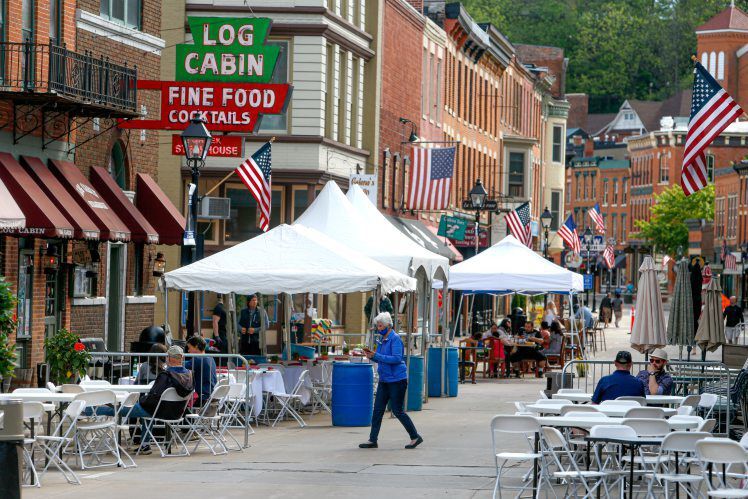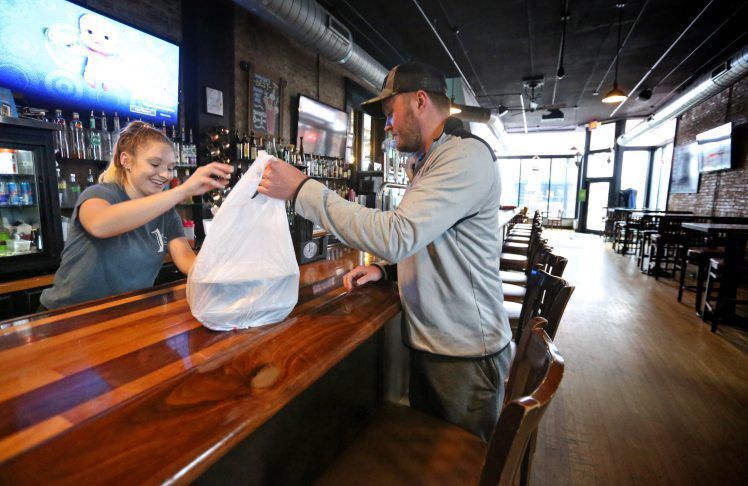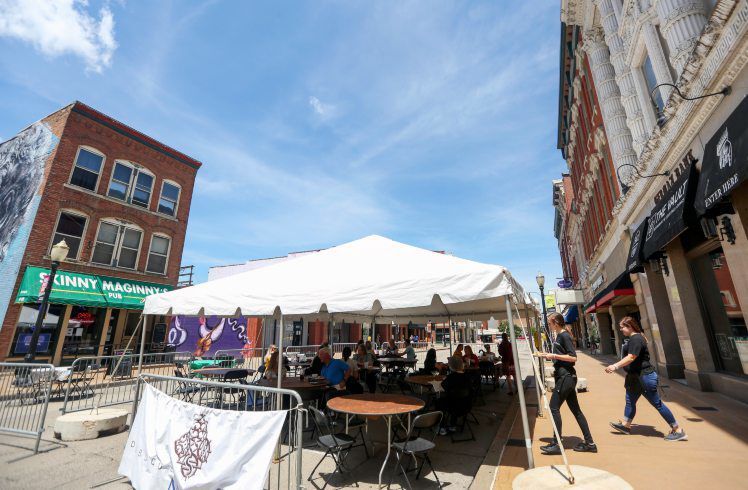Restaurant and bar owners in the tri-states are bracing for cool autumn days and snowy winters as they wonder whether their establishments will survive an unpredictable landscape of public health regulations.
For many in the industry, outdoor dining provided a desperately needed boost to revenue during the summer as state leaders enacted capacity limits to stave off the spread of COVID-19.
But as the season comes to an end, many are looking at alternative options to avoid employee furloughs or closures.
“We have a lot of concerns, especially if we can’t dine inside,” said Kathy Bell, co-owner of Galena Brewing Co. “We’ll be right back to where we were in March. Growlers and to-go. That isn’t going to sustain us during the winter.”
The business can earn revenue from private bookings and carryout, but establishments in Jo Daviess County are grappling with a recent state order that eliminated indoor dining for bars and restaurants.
The ban will not be lifted until the region that spans nine northwest Illinois counties, including Jo Daviess, sees a drop in its seven-day COVID-19 positivity rate, which has exceeded 8% in recent weeks.
This summer, the Galena City Council expanded outdoor dining options by authorizing the use of street parking spaces in front of downtown businesses along with restricting vehicle traffic on South Main Street. But that authorization is set to expire on Saturday, Oct. 31.
Bell is banking that the region’s indoor dining ban is lifted soon, or else some employees face the prospect of layoffs.
Staying outside?
Despite some recent gains, the dining and beverage industry is 2.3 million jobs short in staffing compared to February, according to the National Restaurant Association, and the trade group recently concluded that recovery for the industry will be “measured in years and not months.”
The association reported that almost 100,000 restaurants are closed either long-term or permanently. As of September, sales were down 34% on average, placing the industry on course to lose $240 billion by the year’s end.
To cope, many establishments have turned to outdoor seating.
Seventy-four percent of full-service operators reported their restaurant offers on-premises outdoor dining on a patio, deck or sidewalk, according to the National Restaurant Association.
That is good news for establishments who face indoor capacity mandates or requirements that customers be seated six feet apart.
Houlihan’s restaurant in Dubuque expanded its outdoor seating in August, significantly expanding the venue’s dining capacity.
“It’s still a fairly busy area,” said John Torres, director of hospitality at Q Casino and Hotel, which oversees the establishment. “I believe because of the concern with the spacing and the concern with the indoor dining air filtration, it’s still a popular area, but it’s not as busy … on some of the cooler days.”
Staff have not set an absolute closing date for outdoor dining but will take cues from customers. They anticipate some patrons will be reluctant to make the transition inside.
“This pandemic has really brought us to the point where we’re not sure on any given week what the next week is going to look like,” Torres said. “If there is a spike, people are going to get worried — rightfully so — and it’s going to affect business levels.”
Wisconsin, too, in recent weeks experienced a surge in cases and hospitalizations, and people are subject to an emergency order that limits public indoor gatherings to no more than 25% of a building’s occupancy limit. The order expires on Friday, Nov. 6.
Mike Osterholz, co-owner of 2nd & Main in Platteville, said the restaurant can seat 10 people outdoors year-round, but it has only done so when the weather is warm.
He intends to keep outdoor seating as long as the weather holds, possibly extending the season by digging a few heat lamps out of storage.
However, Osterholz has seen carryout as a reliable alternative and the service has proven popular with customers.
“We’ve seen those numbers increase twofold,” he said.
Carrying on
Area restaurants and even bars have found promise in off-premise consumption, adding new services like cocktails to-go and curbside takeout.
In a survey of 3,500 restaurant operators, the National Restaurant Association reported that curbside service was added by 67% of businesses since the start of the pandemic in March.
“We’ve always done carryout; we just do more of it now,” said Kim Wolff, owner of Pepper Sprout in Dubuque. “We used to do maybe 10 take outs to go in a week. Now, we do 30 to 40.”
While Osterholz feels optimistic that he will survive the winter with a loyal customer base, he knows that smaller establishments in town are struggling.
“It’s a challenge right now,” he said. “I know plenty of places that are muddling their way through it.”





